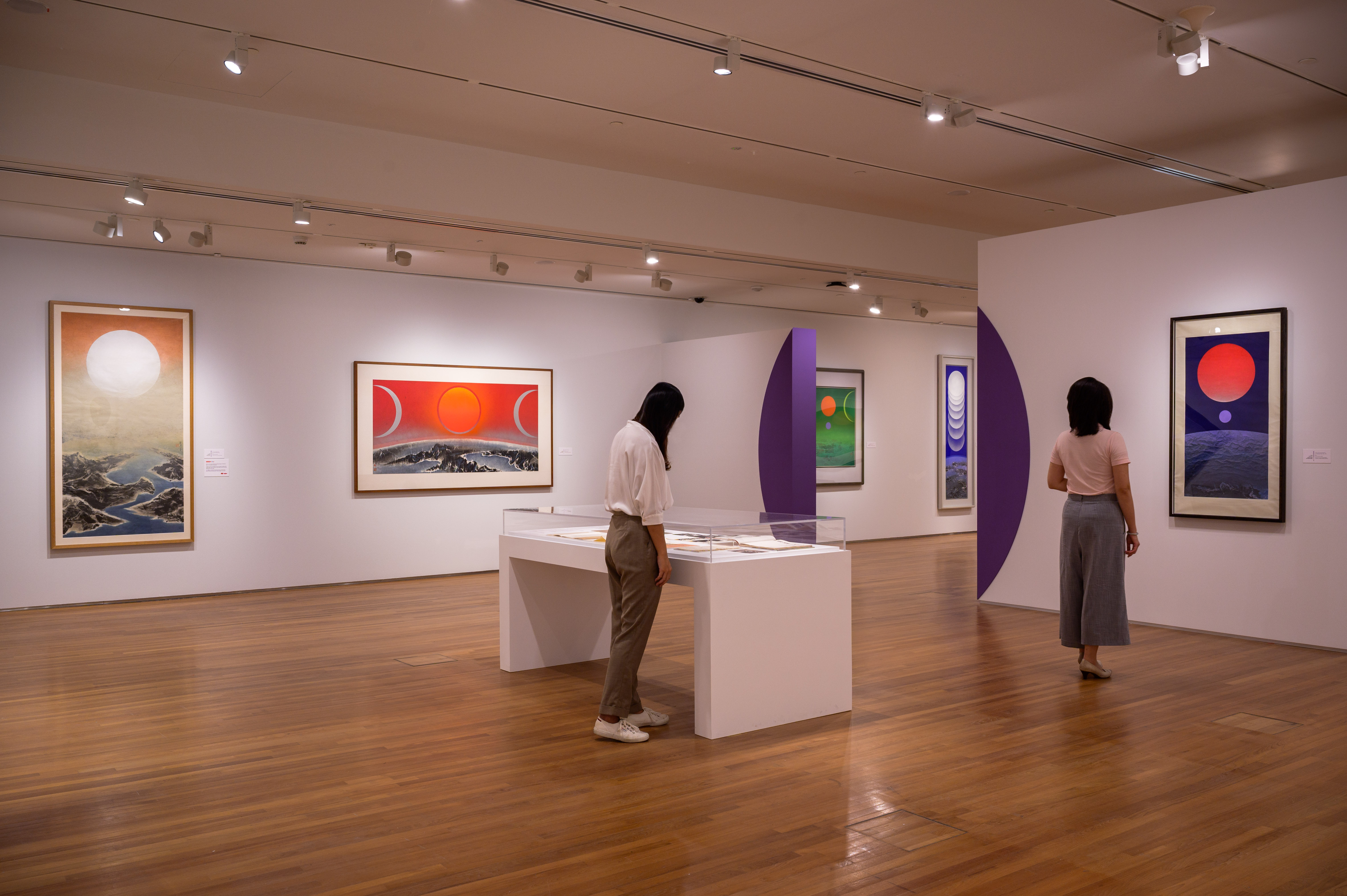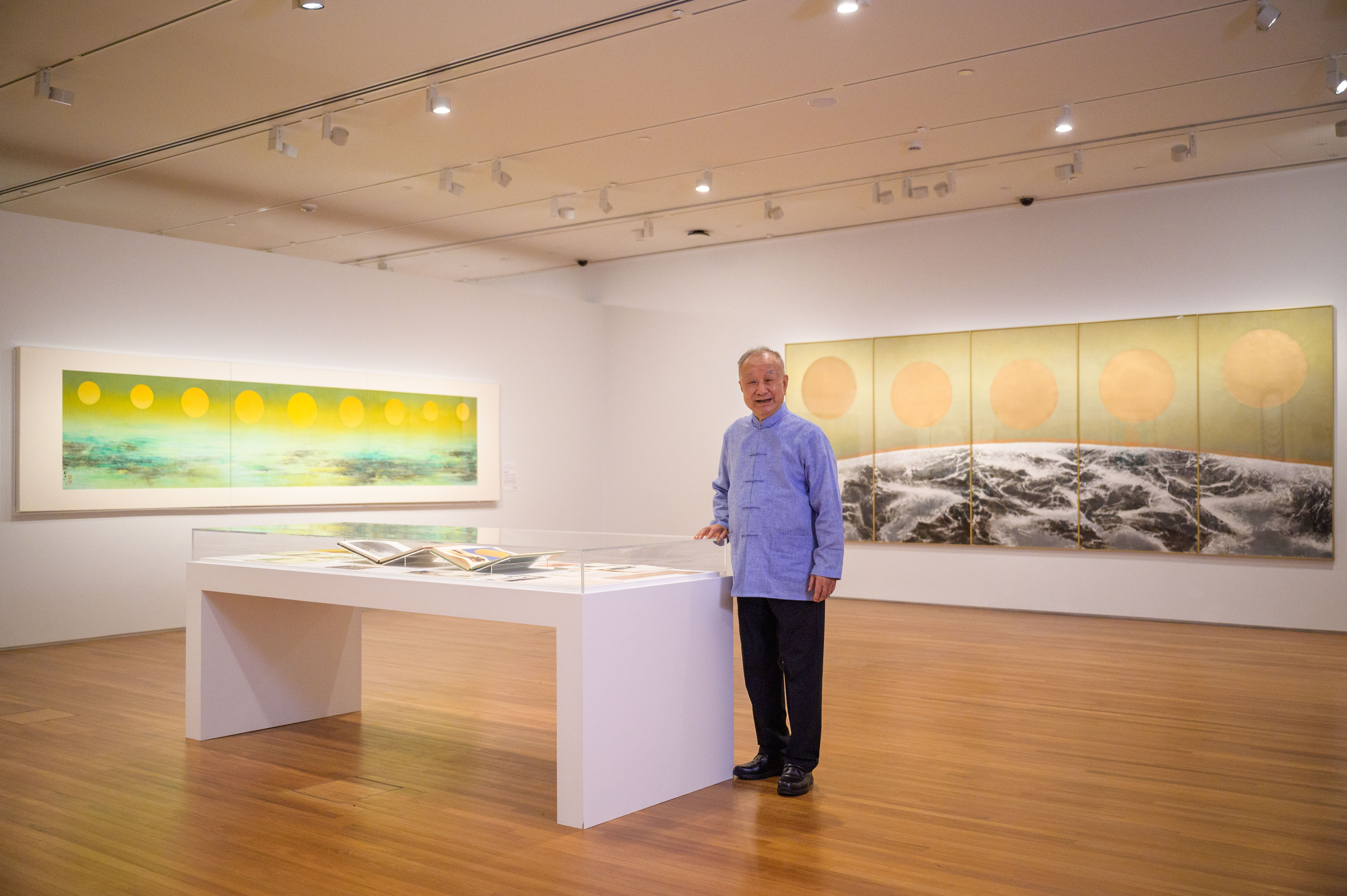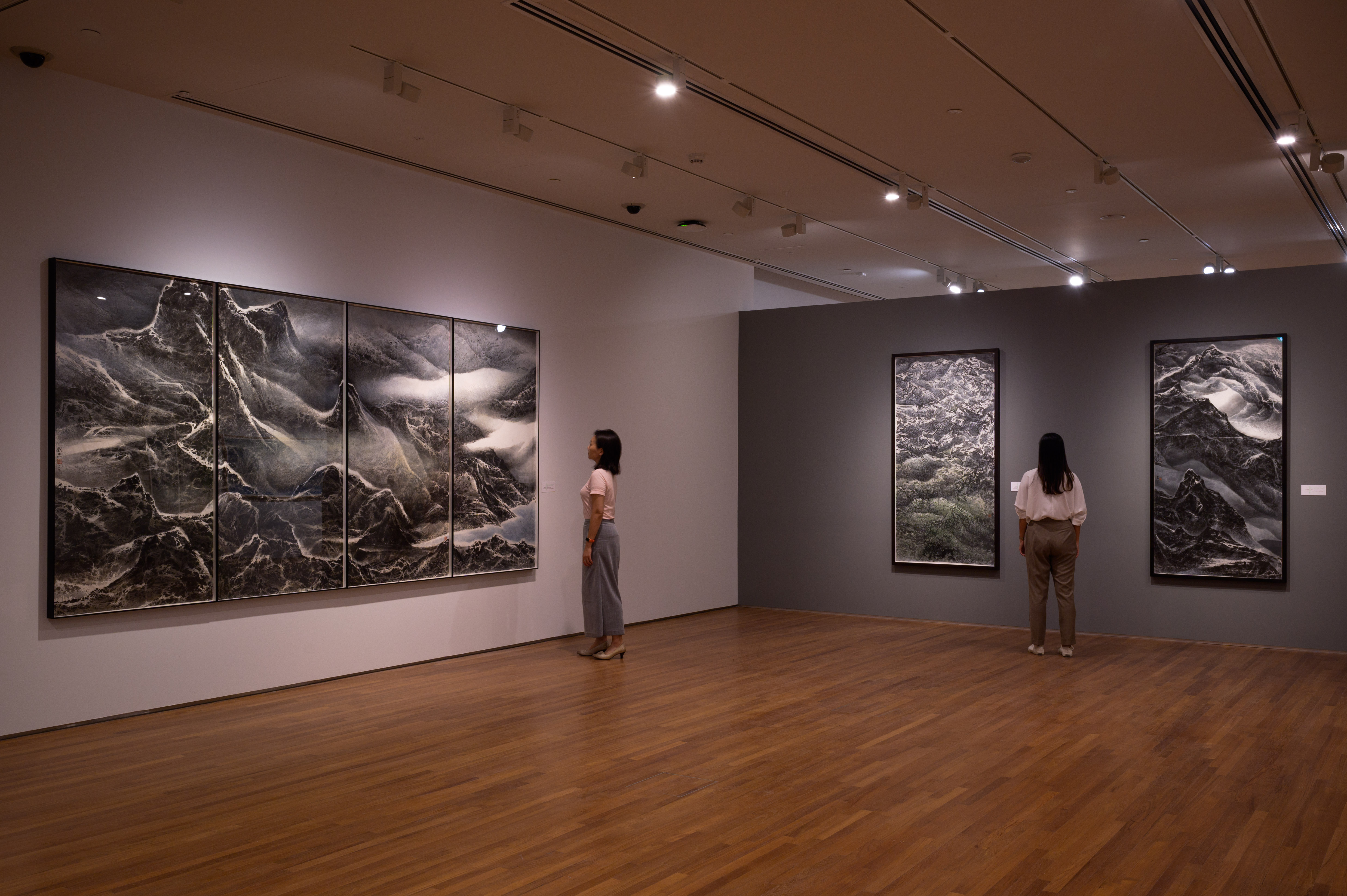National Gallery Singapore stages Singapore’s largest retrospective on the artist in a public museum, spotlighting key periods of his groundbreaking artistic practice across 70 years
Chinese Ink Art Reinvigorated Through Experimentation By Artist Liu Kuo-Sung
Liu Kuo-sung is a world-renowned modern ink master who reconstructed traditions with modernity to create unique ink paintings and transformed the art practice.

Liu Kuo-sung: Experimentation as Method is Singapore’s largest exhibition in a public museum dedicated to the artist. The show, whichopens on 13 January, is a retrospective spanningseven decades of Liu’s artistic career, spotlighting his trailblazing experimentation and sophisticated integration of traditional Chinese and Western art philosophies,which resulted in significant contributions to modern Chinese ink.
Liu Kuo-sung (b. 1932) is lauded for his contributions to the global development of modern and contemporary ink art. Throughout his career, the 91-year-old artist has devoted his energies to exploring and advocating for the modernization of Chinese painting. He was a key founding member of the Fifth Moon Group – a group of artists which initiated a modern art movement in Taiwan between the 1950s and 1970s – and exemplified his modern approaches through his own ink practice and art writings by boldly abandoning Chinese painting conventions.

His spirit of experimentation extends beyond just brush painting techniques – he explored the use of materials to create textural effects in his paintings for enhanced visual impact. This led to the development of a new material – Liu Kuo-sung Paper. His leading role in the modernisation of the art form elevated Liu onto the global stage, where he extensively exhibited across the world in Asia, Europe and America.
Liu Kuo-sung: Experimentation as Method presents over 60 breathtaking ink works and 150 archival materials from Liu’s personal collection, which trace his breakthrough artistic practice across seven decades. This exhibition features works generously donated to the Gallery from Liu, with future additional donations being explored.
Liu’s donation expands and elevates the Gallery’s collection of ink paintings, which includes works by Singaporean ink artists, as well as Chinese ink master Wu Guanzhong. Through this collection, the Gallery has continuously made efforts to deepen the art historical understanding of ink art, as the perspectives of Singapore and Southeast Asia provide a uniquely rich vantage point to examine the regional and global transformation of the ink practice. The Gallery’s spotlight and research on Liu Kuo-sung’s innovations in ink will further the mission to examine the lesser known narratives from the global history of modern ink, advancing the museum’s position as a leading institution for modern ink art in the region.
Dr Eugene Tan, Director, National Gallery Singapore, says, “Liu’s groundbreaking approaches through his painting techniques and use of materials advance new perspectives on the traditional medium. His works showcase the exceptional results of his innovative artistic spirit. National Gallery Singapore is honoured to receive the generous donation of artworks from Liu Kuo-sung and recognition for the Gallery’s efforts in growing awareness and appreciation of Chinese ink. We believe that the depth and breadth of our collections of Chinese ink will appeal to a global audience and support our intention to create dialogue between the art of Singapore, Southeast Asia and the world.”
Lin-Hwei Lee from The Liu Kuo-sung Foundation says, “Over the years, we have seen National Gallery Singapore’s reputable efforts to raise awareness and foster deeper appreciation for Chinese ink. We hope that this donation enables the Gallery to further expand its exhibitions and programmes on Chinese ink to showcase the diversity and beauty of Chinese ink practice for its visitors.”
Experimentation as a method to traditional Chinese ink practice: Exhibition highlights
The exhibition traces notable and distinct periods in his career with a selection of artworks and archival materials, providing visitors with an extended reading of his art that places his works in broader historical contexts and highlights the relevance and significance of his innovations.

In the early phases of his artistic career in the 1960s, Liu already began making innovations in ink. Focusing on the use of materials, he invented his own paper, aptly named Liu Kuo-sung Paper, a coarse-textured thick cotton paper with fibers “glued” to the surface of the paper. After applying ink, the fibres are removed to create a special effect of white lines and textures in the painting. Visitors will have the opportunity to see the texture of this paper and its applications of it in the first exhibition section, Dance of Ink.
Liu also often contemplated marrying brushwork with other art concepts inspired by Western practices. For example, he reinvented the concept of abstraction in the practice of Chinese ink. His propensity to push the frontiers of Chinese ink created a new visual language that reflected nature’s spirit and vitality while echoing the aesthetic forms of classical Chinese landscape paintings.
During the 1960s, Liu had the opportunity to travel to the United States. The 60s also coincided with the buzz of the 1969 Apollo 11 moon landing. This significant global event was captured in one of Liu’s important collage pieces, titled Moon Walk (1969) which he created by attaching an image torn out from LIFE magazine and blended it into his unique ink painting style.
He also encountered practices such as pop art and hard-edge painting, an approach to abstract painting characterised by areas of flat colour with sharp or hard edges. This influenced him to use bright and bold colours in his works. He created an intriguing visual contrast and resonance, contrasting expressive strokes with varied and rich textures of ink and paper in the composition. In the section titled Which is Earth?,view howLiu extended the natural imagery of Chinese landscape painting to the eternal and infinite cosmic landscape of the universe.
In the 2000s, Liu revisited the cosmic views that were first captured in his works from the 1960s, which were inspired by iconic Earth photographs captured by the Apollo 8 space mission, and anchored by celestial bodies hung above landscapes of the Earth. Coming (2014), which measures over three metres long, captures the movement of celestial objects across time and space.
In 1972, Liu became the Chairman of the Department of Fine Arts at the Chinese University of Hong Kong, thus shifting his energies and efforts to art education. At the University, he established a modern ink curriculum that expounded his belief in the application of experimentation, challenging the conventional teaching methods of learning by copying from old masters.
Throughout his career, Liu never ceased to apply this same philosophy to his own practice, refining and redefining Chinese ink through his innovative use of materials and polishing of his techniques, such as water rubbing, paper rubbing, paper tearing and steeped-ink painting – present in the artworks displayed in Searching for Paradise. Despite this desire to expand the practice of the medium, his inspiration from nature remained consistent.
From the 1980s onwards, Liu travelled extensively through China. The works in the last exhibition section Lying Down on Water, Mountains Rising and Falling takes inspiration from the lakes of Jiuzhaigou and the snow-capped mountains of Tibet. He created several series of large, captivating landscape paintings throughout the 2000s.

In these large-scale series, Liu continued to experiment with the use of materials, such as architecture paper, as seen in the artwork In the Midst of a Beautiful Spring (2008). The less absorbent material enabled Liu to push the boundaries of his steeped-ink technique. The culmination of the novel art-making techniques that Liu developed and refined over time, coupled with his return to a semi-abstract approach to Chinese ink are fervently showcased through these evocative masterpieces created in the later part of his career.
Exhibition tours, activities and dining
Visitors can look forward to docent-led tours, activities for the family and children to learn more about ink paintings, a multi-programme response to the exhibition by Siong Leng Musical Association as well as a special dish at The Great Mischief inspired by one of Liu Kuo-sung’s artworks. Talks and panel discussions will also engage audiences in the artistic practices of the master artist.
